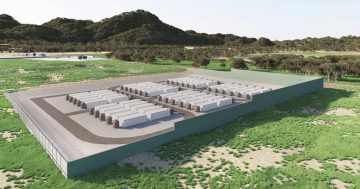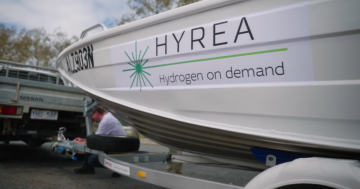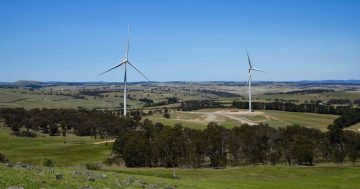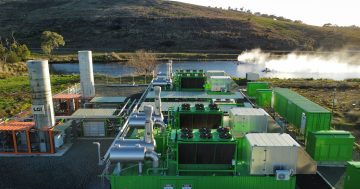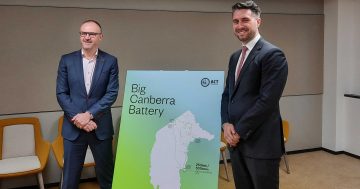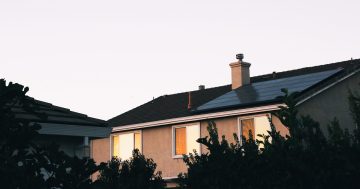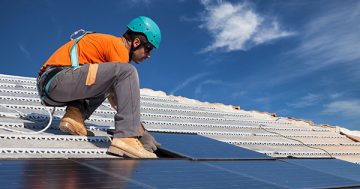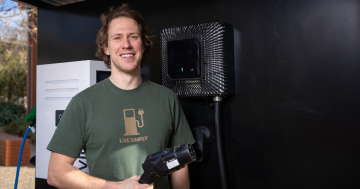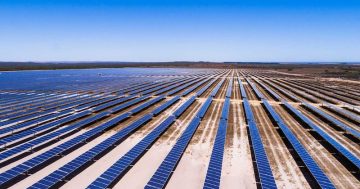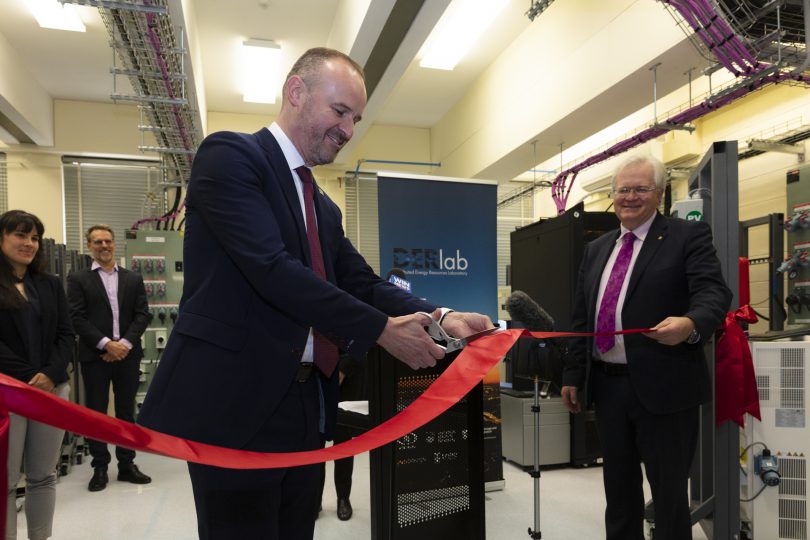
Chief Minister Andrew Barr does the honours at the new ANU lab, assisted by Vice-Chancellor Brian Schmidt. Photos: Thomas Lucraft.
The renewable energy sceptics out there should welcome last week’s announcement of the opening of the ANU’s new research lab that will help guide the transformation of the ACT and national electricity system.
For those who mutter about base-load power, grid instability, and what happens when the sun doesn’t shine and the wind doesn’t blow, the Distributed Energy Resources (DER) Lab is an acknowledgment that the switch to renewables is not without its challenges.
The lab – a joint ANU and ACT Government venture – together with partners UNSW Canberra, evoenergy, and ITP Renewables – aims to smooth out those wrinkles and accelerate the charge towards a zero-emissions economy.
It may be the best $1.5 million the ACT ever invested because it will directly benefit from its research and guide its decisions about redesigning the Territory’s electricity system, already wholly sourced from renewables, so that it can be resilient in the face of extreme weather conditions, and through the coming Big Battery storage network have the back-up to keep the lights on.
The promise is green, clean and cheap electricity.
The work that will go on there in its simulated electricity grid will help make the decentralised or distributed system of the future – all the bits and pieces, as ANU Vice-Chancellor Brian Schmidt so eloquently put it – work together.
It may be a baffling notion for some to grapple with, but the new energy system won’t just consist of a number of big fixed generators; it will be sourced from a multiplicity of assets and sites, including rooftop solar, electric vehicles and the built infrastructure.
The intriguing thing is that for the boffins, it’s not so much what the lab can do now that’s most exciting, it’s what will come next.
Sure they’ll be working on stabilising the grid, battery storage and bi-directional electric vehicle charging, but they are also keeping an open mind about what will emerge from not only their labours but the start-ups and industry partners that will also use the lab’s resources.
ITP Strategy Group manager Oliver Woldring says that the rate of change is so rapid now that it is hard to predict how the lab would be used over the next decade.
“If we look back at the last 10 years, we are now surprised by what we know. If we go forward 10 years and look back, it will be amazing the array of technologies, innovations and inventions that get tested in labs such as this,” he says.
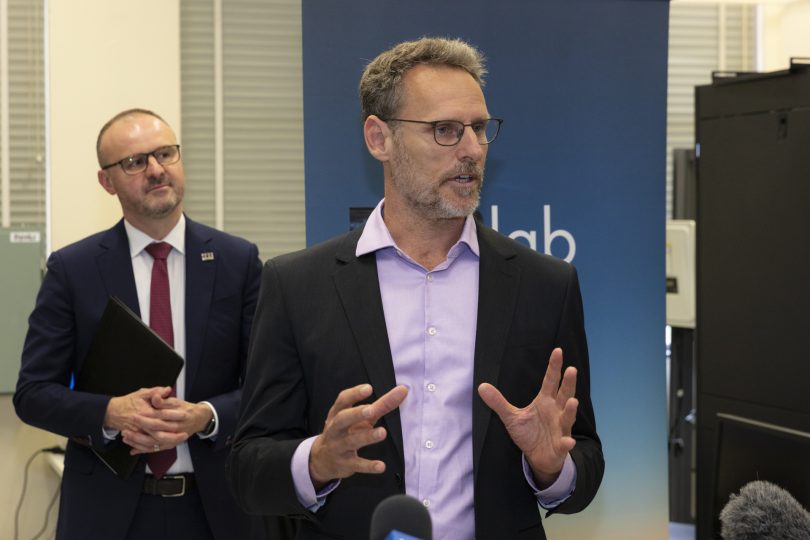
ITP Renewables Strategy Group Manager Oliver Woldring: the array of technologies, innovations and inventions will be amazing.
If the lab doesn’t have all the answers now, it’s going to come up with some pretty interesting solutions, and soon.
Because while the PM isn’t that fond of races, the ANU and its partners, including the ACT Government, understands that the race is well and truly on to decarbonise before global warming can do its worst.
Professor Schmidt, one of 125 Nobel laureates who have called on world leaders to take urgent action on climate change, framed the DER opening in the context of the deadly heatwave scorching Canada and the western US, and the failure of electricity grids in the US due to extreme weather conditions.
There was plenty of back-slapping and mutual admiration going on at the lab opening, but many of us here in the ACT sometimes take for granted the significant research on many levels happening in our own backyard.
The DER lab is one of them, a world-class facility that the ANU’s Heather Logie says will show the rest of the world how to run a decarbonised electricity system.
It is a testament to the vision of a Labor-Greens government that, as Chief Minister Andrew Barr says, may be small but can also run fast when needed.
The DER lab is a big deal for the ACT, which is making a name for itself as a leading player, punching way above its weight in the energy transition and putting Canberra at the centre of a historic shift in the way civilisation organises itself. Failure is not an option.
It’s a pity that because of the murky politics of climate change, the Federal Government is not so quick and fails to share the same vision, although it is edging towards it while accommodating a denialist rump and the vested interests in the fossil fuel industries.
Mr Barr hopes that the lab’s work will help the Morrison Government see the light.
The lab opening is significant, but it did not occur in a vacuum.
It comes as Australia’s energy market operator sets an ambitious target for the country’s electricity grid to handle 100 per cent renewable energy by 2025, the announcement of a European Green Deal, and China trialling a carbon emissions trading scheme.
The world is changing, even if these initiatives have their critics, and as Professor Schmidt says, Australia needs to be ahead of the curve.
He says Australia must grasp the opportunities now to decarbonise and secure its economic future. It can be a distributed energy resources superpower, he says.
And save the world at the same time.












